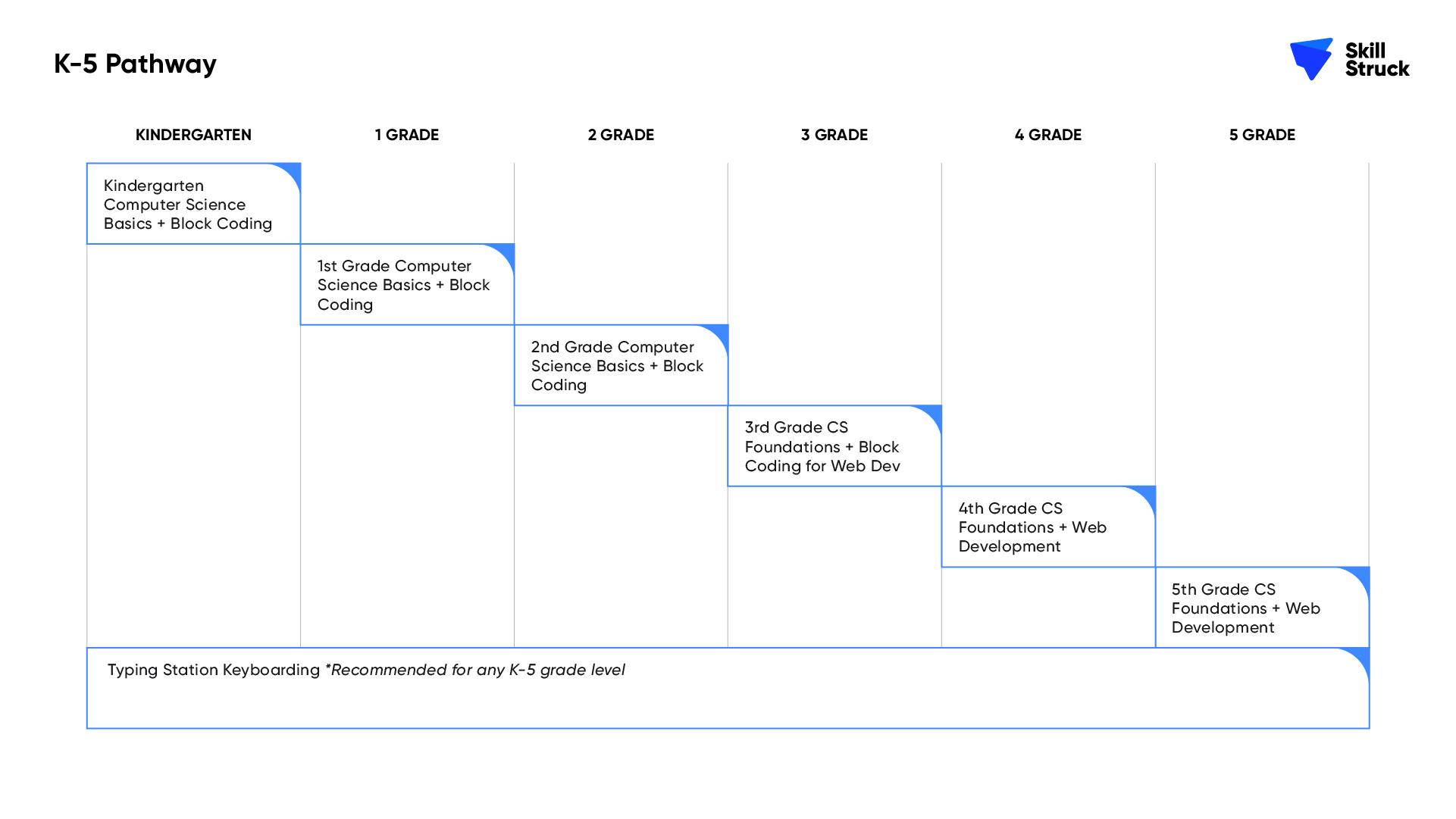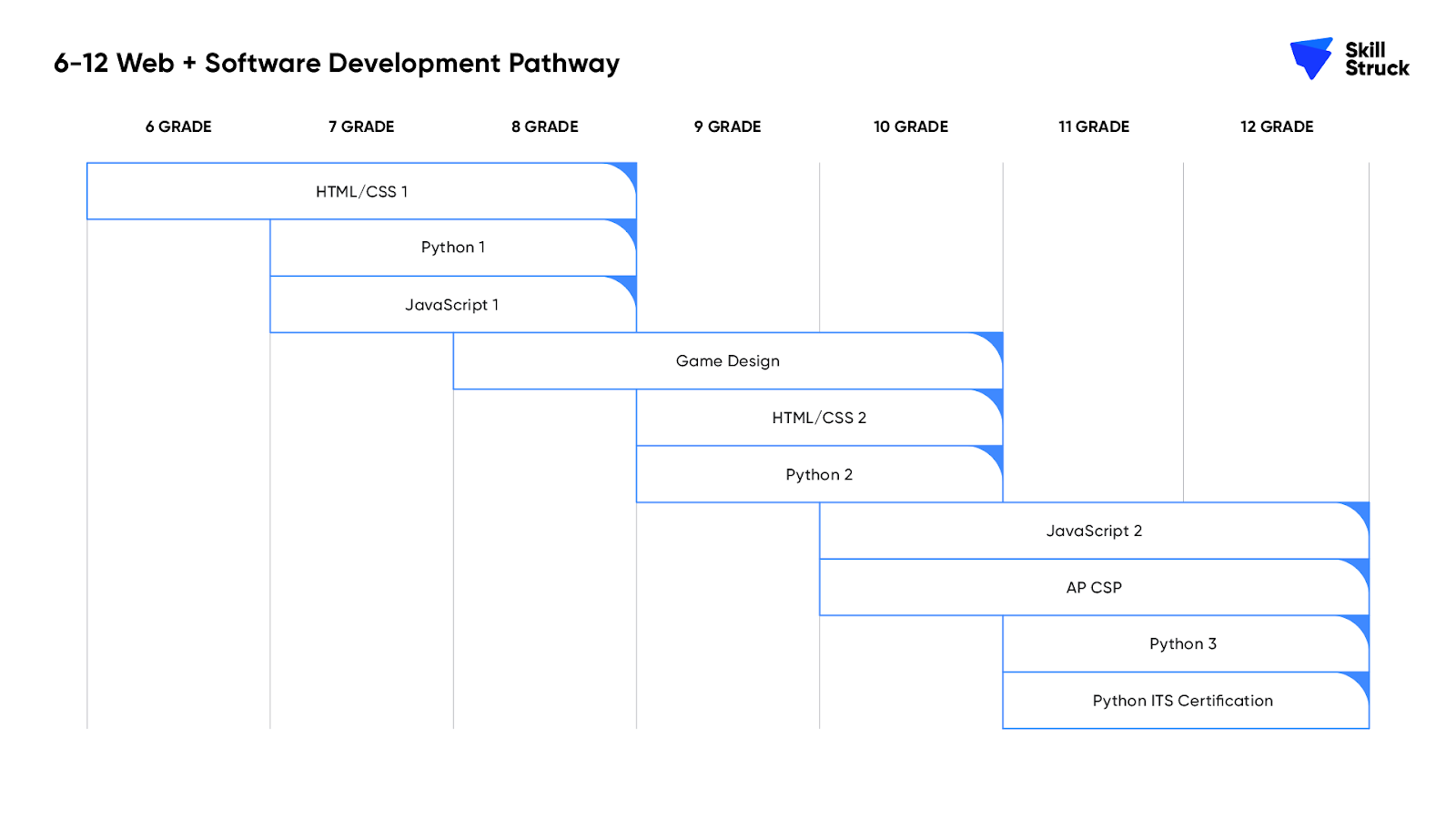
The term “pathways” is one of many–including ladders, streams, tracks–that is used to describe a route that learners can follow to get through an education or training system. In K-12 education, there are a variety of different pathways that educators create to help students successfully learn a concept or skill set that prepares them for a certain industry.
These career, or career and technical education (CTE), pathways include environmental service systems, agriculture, health science, finance, government and public administration, computer science, and more.
It is the responsibility of CTE educators to create these different pathways. This blog includes some helpful tips on how to build a comprehensive K-12 computer science pathway.
K-5 Foundational Computer Science Pathway
We’ve seen many districts build solid 6-12 and 9-12 pathways in computer science (CS). Over the recent years, it’s becoming more evident that introducing CS earlier to students prepares them for a stronger 6-12 pathway–or ability to learn more in depth concepts that can carry them into careers in tech.
Students can start their CS education as early as Kindergarten. They can start learning CS concepts through unplugged activities and block coding. Historically, we’ve seen districts teach their students code via block-coding and introduce them to text-based in later grades. In this example pathway below, we recommend introducing text-based coding sooner.

*Skill Struck offers more courses than those represented on this chart. Schools and districts can customize their own pathway from Skill Struck's catalog of courses.
Students grades K-5 can also engage in typing courses. This will help train their fingers to use the keyboard efficiently for coding classes.
6-12 Web and Software Development Pathway
As students approach grades 6-12, these years in their learning are a great time to introduce web and software development skills and languages that prepare them for coding and development jobs.
Web development languages include HTML, CSS, and JavaScript. Software development languages include Python.
You can start your 6-12 students in introductory web and software development language courses and progress them into more advanced courses as they move up in grades. In Skill Struck’s recommended pathway chart below, you’ll see the natural progression from introductory coding courses to more advanced-level web and software development courses.

*Skill Struck offers more courses than those represented on this chart. Schools and districts can customize their own pathway from Skill Struck's catalog of courses.
Not every student is bound to be a software and web developer. However, every student can benefit from following a comprehensive K-12 computer science pathway as shown above. Using these pathways, students learn skills like computational thinking, problem solving, how to have a growth mindset, and many other skill sets that will set them apart as they enter the workforce of their choice. To learn more about how you can customize a CS pathway for your district or school, schedule a demo at www.skillstruck.com/get-demo.
Leave Your Comment Here